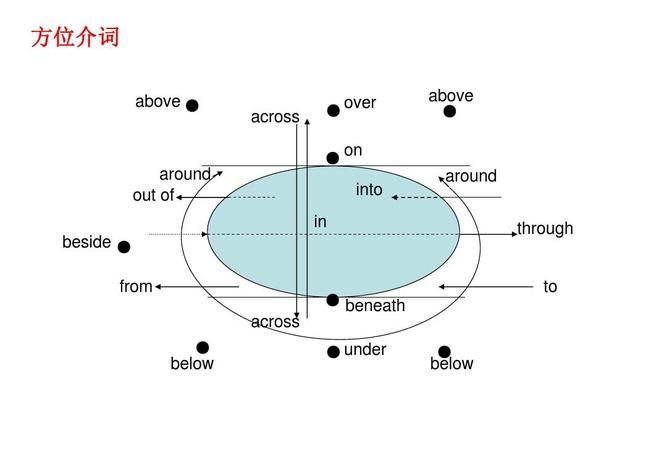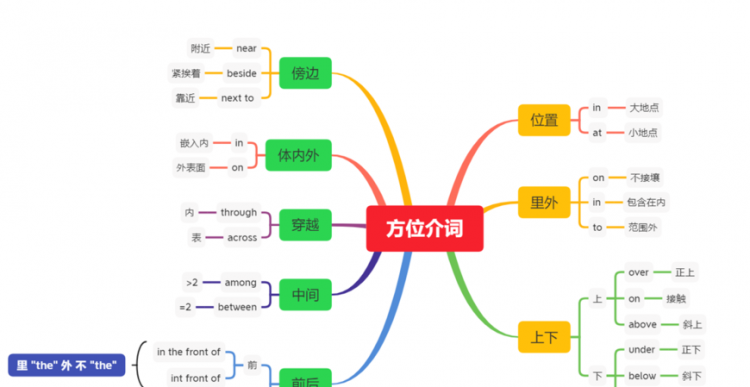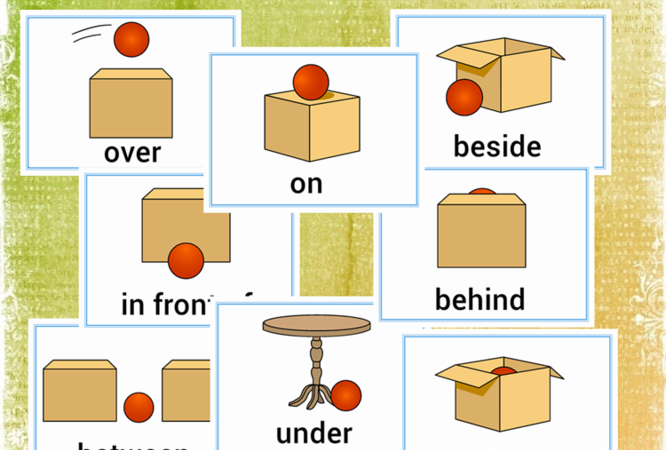本文目录
考研英语完型填空一般花多长时间
完型填空主要测试考生结合上下文的综合理解能力和语言运用能力,即在阅读理解的基础上对篇章结构,语法和词汇知识的运用能力的考查,这是对完型填空的定位。大纲明确指出对完型填空考核的重点:词义辨析、语法、固定搭配、和逻辑关系四大类题型。现通过对最近13年的考研完型真题的系统分析,从而使我们更明确的把握命题人的出题思路并能透析到命题人怎样将考纲的要求贯穿到试题当中。
1.图表一:2001——2013年完型考查知识点分布情况
年份
词义辨析
逻辑关系
固定搭配
语法知识
2001
14
3
2
1
2002
11
4
4
1
2003
12
4
4
∕
2004
10
6
3
1
2005
9
7
4
∕
2006
11
6
2
1
2007
14
4
2
∕
2008
14
3
3
∕
2009
13
4
3
∕
2010
11
4
5
∕
2011
13
4
3
∕
2012
14
3
3
∕
2013
12
5
3
总计
134
50
43
4
【分析结论】
由图标的统计数据我们可以看出,在立足完型考研真题整个9年的宏观分析后,很容易发现,词汇和逻辑连贯性是完型题目考查的重点,两者在完型填空所有题目中所占的考察比例远远超过了其它两者。
一、词汇是重中之重的考查点
众所周知,考研英语的复习备考大多从词汇开始,而词汇的掌握程度往往决定了整个考研英语备考的地基是否坚实。在完形填空中,词汇的霸主地位依旧不可撼动,在数不胜数的题目中可以看到关于词汇的考察。一般而言,我们将词海文考研钻石卡汇考察部分分为基本词义与近义辨析两个部分。前者考察的主要是考生能否识别选项中的单词意思与用法,因此出现的考察选项往往并非较为常见,或者以较为常见单词中不是很较为常见的意思进行考察。后者考察的难度要更高一些,立足于将意思较为相近的四个选项,或者虽然意思并非相近但容易让人误以为意思相近的选项,给考生进行辨析,一方面,考生需要结合上下文找出所要填充选项的单词大致意思,另一方面,考生更要从意思相近的选项之中筛选出所真正要的正确选项,困难可以说是很大,这一能力的提高往往需要大量的相关题目进行良好的训练。
二、逻辑连贯性的考查比重在加大
逻辑连贯性就是指上下文,解答完型试题的核心宗旨是参照上下文做好题目。由上表可以看出,对上下文逻辑关系理解的考查在最近几年的完型试题中的比重逐渐加大。这类题反映在考题上主要是选择能使上下文连贯的连词、副词或短语,这就对考生从整体上把握文章的内容、注意句际间的关系提出了更高的要求。另一方面,正是如此,逻辑连贯性通常不大单独考查,往往与词汇、固定搭配或者语法一起考查。考生在备考时不但要花大力气去掌握要点、积累词汇,还要注意词汇搭配习惯和用法上各自不同的特点等。另外,还要学会通过语境暗示推断词义和连词的用法,及词与词、句与句、段与段之间的逻辑关系。
三、固定搭配与语法是不可小觑的考查点之一
相比于词汇与逻辑连贯性,固定搭配与语法虽然不是同样重要的考查点,但是也不能完全忽视对其的复习。尤其是固定搭配,作为传统的完型考查项目,一直在完型考查中占不可忽略的一席之地。固定搭配作为很初级而又很直观的考查点,具有自己很明显的特点,即在对于某一固定搭配的考查之中,对于认识和掌握这一固定搭配的人来说,固定搭配非常简单易选,但对于不熟悉这一固定搭配的考生来讲,往往很难凭借既有英语基础做出正确推断。所以对于体系庞大的固定搭配的重复不断记忆往往变成这一部分备考的突破点所在。
四、语法绝对不可以忽视
无论是在考研英语中还是在英语知识运用中,语法的地位都绝对不可以忽视。在考研英语不再将语法单选作为单独考查项目以后,语法这一关键英语部分就被列入唯一有继续考查语法可能的英语知识运用之中,只是很多考查变得隐蔽一些。在完型中直接考查语法知识的题目数量很少,但其实完型填空中的各个考查项都或多或少的与语法有关联尤其结合词汇的使用和对上下文理解而测试语法的题还是不时出现。因此,在考研复习的初始阶段,一定要注意夯实自己的语法基础。
2.图表二:2001——2013选项词性考查分布情况
【分析结论】
我们可以看到在对词性的考查之中,有关动词和名词的考查占到了词性考查点的大半江山,由此,我们可以看出,关于动词和名词部分的复习备考是词性备考的重中之重。
紧随其后的既是关于形容词、副词的考查。由此,我们看到,基本词性为代表的动、名、形容、副词在完型考查中传统的重要地位丝毫没有撼动,词汇考查的根本依旧是关于基本词汇的基本词性的考查。
值得一提的是有关介词、短语和连词的考查。这三者虽然在考查比重上远远不及前几者的基本词性,但其重要程度却是相当高,首先因为介词在整个完型考察中作为屡试不爽的最大难点一直是考生的最大失分对象之一,而与介词考查有着天然联系的固定搭配由此也成为很大的难点,最后的连词,貌似简单,实际上,由于完型整体难度的较高,也随之水涨船高的考察难度不断提升,因此,这一部分的词性考查,可以说虽然比重占得不大,但却绝对是完型考查的最大难点。所以,在攻克这一部分之后,完型的大规模失分情况也必将得到有效缓解。
最后,动词现在分词与动名词考查方面,即我们所说的ing形式以及代词考察点,相对而言,考查的比重不多,而且难度也不大,在整个词性考查中的地位,相对不高,不是整个词性考查的关键备考点。
3.图表三:2001——2013年句法逻辑关系考查内容分布情况
【分析结论】
逻辑连贯性中的句法逻辑,即是指上下文句子之间的逻辑关系,或为转折或为递进等等。分析句法逻辑的目的在于更好的突出和理解“联系上下文”这一完型中突出强调的解题思路。只有正确的理解了上下文之间的逻辑关系,才能更好的理解文章原意,以及更好的选择正确选项,一般而言,选错的一个重要原因,即是对作者的意思产生歧义,而产生歧义的一个重要原因不外乎对于上下文之间句法逻辑把握的出入。
我们从上表中可以看出,转折关系在所有句法逻辑中遥遥领先的占据最为重要的位置,可以看出完型之中很注重考查转折句式,即上下文之间的意思有所区别,一般用but,however等常见转折性词汇作为引导完成句子意思的前后转折。考生务必对转折句式格外重视,才能有效找出正确选项。
同时,让步关系考查点在句法逻辑中的地位也很突出,在真题中,一般以though,even though等形式进行引导,非常常见,需要考生在看到这些表示让步语气的单词或词组时候清晰把握。
4.图表四:2001——2013年语法考查点分布情况
【分析结论】
直接考查语法的单选题目被拿下之后,大家普遍认为最大的语法考查项目转移到了完型之中,这也随着完型总题量由10个增多为20个中有所体现。但是,完型中所考查语法与之前直接考查语法题目的最大区别即在于完型中语法知识点的考查相对处于较为隐蔽的地位,如果从直观上看,直接考查语法的项目并不多,但是细加分析后不难看出,相当大部分的完型考查选项都与语法间接相关,掌握好相关语法项考研培训目,不仅有助于更好的读懂因为缺失有效选项而显得格外艰涩的完型文章,而且有助于更好的排除干扰项,更在某些情况下,做对那些直接考查语法的相关选项。
从上表中我们可以看出,在为数不多的一些直接考查语法知识点的选项中,介词用法和动宾结构占到了非常大的比重,这也告诉我们必须在复习备考中,非常重视这两者的复习。同时介宾结构和宾补结构也需要引起考生的重视。

形容词性物主代词
形容词解释
一。只能用作定语,不能用作表语的形容词:little,wooden ,golden,many,elder 不能说The boy is little。the watch is golden/wooden
二、只能用作表语,不能用作定语的形容词:well,ill,alone,content,unable,worth,afraid,alive ,asleep, ashamed,awake, aware.
an ill boy ,an alone village 就是错的短语,an ill idea "坏点子"ill当定语时是转义了,不是"有病的"了。
三、表示倍数常用的句型:
He is as tall a boy as I.
He is a head taller than I .
He is two years older than I
China is four times as large as Europe.
I am twice as old as you
I am twice older than you.
I am twice the age of you.
My books are twice as many as yours
China is four times larger than Europe.
China is four times the size of Europe.
I pay twice as much as it was worth.
I pay twice as much for the house .
五.与动词有区别,表示延续状态的形容词:open,dead, still静,一动也不动,常修饰动词sit,stand
The door is open/closed.不要选opened或close.有特殊意义的形容词有:closed关,close形容词是"近",不是"关"了 near,nearly,hard,hardly,most,mostly大多数
六.very修饰原级形容词副词,修饰—ing,放在名词前表示强调。
much 修饰动词,修饰比较级最高级,修饰过去分词 。
四、--ly结尾一般是副词,但有些—ly结尾是形容词的:lonely,friendly,They talk in a friendly way.lovely,ugly,silly,likely,deadly,
五。在be,seem,及物当主语的look,taste。smell,feel,sound,appear等动词后用形容词,I looked at the flower. The flower looks beautiful. He appeared (出现)suddenly. He appeared(显得) happy.
六.表示主语长期的静止状态,不强调动作的sit,stand,lie 接形容词quiet,silent,still,red,peaceful等
The valley lay quiet and peaceful
She sat silent . They stood still.
七.become,fall ,get,go,turn 表示"变得"时后跟形容词.
The leaves fell/got/went/turned yellow.
It fell/got/went/turned cold.
八.present 表示"出席的,到场的"的时候常放在名词后,the members present 表示"现在的"则放在名词前 the present members
九.live有时可用做形容词: a live fish 活鱼(形容动物,不形容人 ) The broadcast comes to you live from Beijing .实况转播 That wire is live 电线是带电的 lively 生动的,活泼的。 His class is often lively.
十.the +adj表示一类人,是复数
The rich should help the poor.
the blind /wounded/young/old
十一.多个形容词作定语时的位置:排列顺序大致为:all/quite/such/rather限定词(包括冠词、物主代词、指示代词、数词、不定代词等) + 描绘形容词(短词在前,长词在后)+ 特征形容词(包括大小、形状、新旧、年龄等)+ 颜色形容词 + 类属形容词(包括专有形容词和材料质地形容词) + 名词性定语(包括动名词)+ 名词。
It is such a charming little short old round yellow
.......如..冠...抽.........大....高....老...形....色
french oak writing table.
..国...材....用
为方便背颂,特简化成9字诀:抽大高,老形色,国材用
抽:即抽象性质如beautiful,wonderful,terrible之类较空泛的词。
大:big,little,small,
高:tall,high,short,low
老:old,new,young,
形:square,round等
色:white,black,brown,red,gray,green,blue等
国:出产地方,往往是国家的形容词。汉语总是把产地排前,其它置后:中国美酒
材:woden,plastic,brick,silk,wool等材料,很多是名词
用:物品的用途writing,fishing,walking,swimming用来写字的,钓鱼的,走路的,往往是动名词。
1.She has a ___ jacket.(leather,brown,beautiful)beautiful brown leather
2.He has a ___ car. (long,red,American)
3.They live in a ___ house. (old,beautiful)
4.We have a ___ table. (antique,small,wooden)
5.He has a ___ jumper. (, lovely, red,woollen)
6.She has a ___ ring. (fabulous new diamond)
7.It was a ___ song.(French,old, lovely)
8.He owns a ___ dog.(black,horrible,big)
9.She bought a ___ scarf.(gorgeous,pink silk,)
10.I saw a ___ film. (,fantastic,new British)
1.beautiful brown leather jacket.
2.long red American car.
3.beautiful old house.
4.small antique wooden table.
5.lovely red woollen jumper.
6.fabulous new diamond ring.
7.lovely old French song.
8.horrible big black dog.
9.gorgeous pink silk scarf.
10.fantastic new British film.
(注上述原则不是放之四海而皆准的,要把普遍真理与特殊实际结合起来.一般说来,"抽,.....色,国,材,用"的位置是较确定的,"大,高,老,形"则不太确定,它们有时归类于"抽象"的一大类,在抽象的大词类中按短词在前,长词在后的原则甚至按照读音舒服顺口原则排列.例:
a tall intelligent young Chinese officer 一个聪慧的个子很高的年轻的中国军官
一定要和形容词结合才能分清副词的用法:
形容词和副词形容词和副词在语法结构中主要用于比较级和最高级。形容词和副词的构成形式基本上一样,它们的形式与单音节、双音节和多音节有关,当然还有其特殊形式。形容词和副词比较级的基本用法分为同级比较、比较级和最高级三种形式。但这三种形式都有它们特殊的表达方式以及它们的惯用法。对以下要点大家须一一掌握。
第一节 形容词比较级和最高级的形式
一、形容词比较级和最高级的构成
形容词的比较级和最高级变化形式规则如下
构 成 法 原 级 比 较 级 最 高 级
① 一般单音节词末尾加�er 和 �est strong stronger strongest
② 单音节词如果以�e结尾,只加�r 和�st strange stranger strangest
③ 闭音节单音节词如末尾只有 一个辅音字母,
须先双写这个辅音字母,再加�er和�est sad
big
hot sadder
bigger
hotter saddest
biggest
hottest
④ 少数以�y,�er(或�ure),�ow,�ble结尾的双音节词,
末尾加�er和�est(以�y结尾的词,如�y前是辅音字母,
把y变成i,再加�er和�est,以�e结尾的词仍
只加�r和�st) angry
clever
narrow
noble angrier
cleverer
narrower
nobler angrest
cleverest
narrowest
noblest
⑤ 其他双音节和多音节词都在前面加单词more和most different more
different most
different
1) The most high 〔A〕 mountain in 〔B〕 the world is Mount Everest, which is situated 〔C〕 in Nepal and is
twenty�nine thousand one hundred and fourty one feet high 〔D〕 .
2) This house is spaciouser 〔A〕 than that 〔B〕 white 〔C〕 one I bought in Rapid City, South Dakota 〔D〕 last year.
3) Research in the social 〔A〕 sciences often proves difficulter 〔B〕 than similar 〔C〕 work in the physical 〔D〕 sciences.
二、形容词比较级或最高级的特殊形式:
1. 三个或三个以上音节的形容词只能加more和most
只能说 more beautiful而不能说beautifuller; 只能说the most beautiful而不能说beautifullest。
但是,以形容前缀�un结尾的三音节形容词不适合上述情况,如unhappy,untidy,我们可以说:unhappier→unhappiest, untidier→untidiest
2. 由�ING分词和�ED分词演变过来的形容词(包括不规则动词如know→known)只能加more或most来表示它们的比较级和最高级
more(most) striking, more(most) interesting, more(most) wounded, more(most)worn等。
4) The drawings 〔A〕 of the old masters 〔B〕 are among the treasuredest 〔C〕 works in museums 〔D〕 .
3. 英语里有些形容词由于其词义而不可能有比较级形式
absolute fatal main right universal
chief final naked simulta- utter
entire foremost perfect neous vital
eternal inevitable possible sufficient whole
excellent infinite primary supreme wooden
三、不规则形容词的比较级和最高级形式
good
well better best
bad
ill worse worst
many
much more most
little
few less least
far farther farthest
further furthest
5) African elephants are larger, fiercer, and difficulter 〔A〕 to tame 〔B〕 than 〔C〕 Asian elephants 〔D〕 .
6) Sarah Hale became 〔A〕 one of the famousest 〔B〕 magazine 〔C〕 editors in the United States during 〔D〕 the 1800’s.
7) Of all 〔A〕 the Native American tribes 〔B〕 , the Shawnee Indians were 〔C〕 a most 〔D〕 transient.
四、例题解析
1) A错。应将“most high”改为highest。这是在考形容词比较级的构成形式。
2) A错。改为more spacious。
3) B错。 改为more difficult。
4) C错。 treasured 在本句中是�ED分词(动词treasure +ed)作形容词使用,是“宝贵的、珍贵的”意思,修饰名词 works(作品),其最高级形式应用 the most treasured。
5) A错,改为more difficult。
6) B错。改为“the most famous”,因为famous(著名的)是双音节,其最高级变化应在前面加“the most”。
7) D错。应改为“the most”,因为此处表示的是最高级,“the most transient”意为“(延续时间)最短暂的”。
第二节 副词比较级和最高级的形式
副词比较级和最高级的变化形式与形容词基本上一样
一般 副词
hard→harder →hardest
fast→faster →fastest
late→later →latest
early→earlier →earliest
特殊 副词
well →better →best
much →more →most
badly →worse →worst
little →less →least 但是,开放类副词即以后缀�ly结尾的副词不能像形容词那样加�er或�est,如
quickly →more quickly →most quickly quietly →more quietly →most quietly
〔注〕: early中的�ly不是后缀,故可以把�y变�i再加�er和�est
第三节 形容词与副词比较级和最高级的基本用法
一、原级比较的基本用法
1. 原级比较由“as+形容词或副词(或再加名词或短语)+as ”构成“原级相同”比较句,表示两者比较;其否定式,即“程度不及”比较句型为“not so(as) +形容词或副词+as”,而且as…as结构前可用just, almost, nearly, quite等表示程度的词修饰
1) Walking briskly for thirty minutes will burn as many calories as .
〔A〕 to run for fifteen minutes
〔B〕 running for fifteen minutes
〔C〕 you run for fifteen minutes
〔D〕 fifteen�minute walking
2) The gorilla(大猩猩), while 〔A〕 not quite as curious than 〔B〕 the chimpanzee(黑猩猩), shows more persistence 〔C〕 and memory retention(记忆力) in solving 〔D〕 a problem.
3) Alaska is twice 〔A〕 as larger 〔B〕 as 〔C〕 the next largest 〔D〕 state, Texas.
2. “as (so)+名词+as+名词”进行名词比较,这时一般情况下有一个表示原级的比较词,但如果第一名词前出现了形容词修饰该词或出现副词修饰谓语,应当用so而不用as
4) Thomas Jefferson’s achievements as an architect rival his contributions a politician.
〔A〕 such
〔B〕 more
〔C〕 as
〔D〕 than
5) I should say Henry is not much a writer as a reporter. (88年考题)
〔A〕 that
〔B〕 so
〔C〕 this
〔D〕 as
二、比较级
1. 比较级由“形容词(副词)比较级+than+…,”构成表示在两者中间一方比另一方“更加…”。连词than后可接句子,也可接名词、代词、名词短语、介词短语、动词、动词不定式、�ING结构和�ED结构,有时也可省去than。
6) Natural mica(云母) of 〔A〕 a superior 〔B〕 quality is cheapest 〔C〕 to obtain than synthetic 〔D〕 mica.
7) She is older than .
〔A〕 any other girl in the group
〔B〕 any girl in the group
〔C〕 all girls in the group
〔D〕 you and me as well as the group
8) Josephine McCrackin joined 〔A〕 the “Santa Cruz Sentinel” in 1905 and, until her death fifteen years late 〔B〕 , remained 〔C〕 active in journalistic 〔D〕 work.
2. 注意than前后两项相比较的人或事物要一致
9) The purpose of the research had a more important meaning for them than .
〔A〕 ours
〔B〕 with us
〔C〕 for ours it had
〔D〕 it did for us
10) Sound travels air.
〔A〕 faster through water than through 〔B〕 faster than through water and
〔C〕 through water faster and〔D〕 where it is faster through water than through
11) Gerbrand von den Feckhout, one of Rembrand’s pupils, followed 〔A〕 the style of his teacher so implicitly that 〔B〕 his paintings 〔C〕 are sometimes confused with his master 〔D〕 .
三、最高级
1. 最高级用于三者以上比较,形容词的结构形式是“定冠词+形容词最高级+名词+表示范围的短语或从句”(如all, of all, of the tree, in the world, that has ever taken place等)
12) The more 〔A〕 fearsome of all the 〔B〕 animals in 〔C〕 the Western 〔D〕 Hemisphere is the grizzly bear.
13) Of all economic 〔A〕 problems, inflation continues to be 〔B〕 a 〔C〕 most significant in its daily impact on 〔D〕 people and business.
14) , the most familiar to general public is the criminal jurisdiction.
〔A〕 All the activities
〔B〕 The activities
〔C〕 Of all the activities
〔D〕 It is the activities
2. 副词的最高级与形容词最高级的区别在于最高级前没有定冠词the
四、例题解析
1) B为正确答案。
2) B错。改为 as ,和前面的as和形容词原形curious 一起构成同程度比较。
3) B错。 改为as large。
4) C对。动词rival(胜过、匹敌)前后是两个相比较的成分achievements(成果)和 contributions(贡献),由于前面的名词后出现了短语 as an architect,故空白处也应用as,使前后对比成分一致。
5) B为正确答案。
6) C错。应改为比较级cheaper。比较级后并不一定跟接连词than,有时在其间有名词或名词短语(被形容词所修饰),介词短语,不定式或其他成分隔开。
7) A为正确答案。“She”作为单个不能跟全组比(C和D不对),也不能跟全组所有相比,因为“她”也是其中一员,自然“她”不能跟自己相比。这里“She”比较的是“这组中的任何一个”,所以A对。
8) B错。应改为比较级later,因此处实为与1905年相比晚15年,故应使用比较级。
9) D为正确答案。
10) A为正确答案。
11) D错。 改为his master’s。
12) A错。 改为most。
13) C错。改为the, significant是多音节形容词,在此处应用最高级形式(在前面加 the most),注意句中的“of all… ”。
14) C为正确答案。本句空白处缺状语,A和B全为名词短语,不符合条件;D为句子,和空白后面的句子没有任何联系,故亦应排除。只有C正确,和后面的最高级the most familiar前后呼应。
第四节 形容词和副词的特殊表达法
一、形容词与副词的同级比较: 由“as(so)…as”引出,其否定式为“not so…”或“not as…as”,考生还应注意下列含有“as”结构或短语的句子
1. as such:表示上文所指明的事或人
He is a child,and must be treated as such. 他是个孩子,必须被当作孩子对待。
2. as much:表示“与…同量”
Take as much as you like. 拿多少都行。
I would gladly have paid twice as much for it. 就是价格再贵一倍,我也会愿意把它买下的。
He as much as admitted the whole story. 他几乎全部承认了。
3. as many:表示“与…一样多”
I found six mistakes in as many lines. 我在六行中发现了六个错。
二、表示“几倍于”的比较级:用twice (两倍),four times (四倍),ten times (十倍)加上as … as 结构
This one is four times as big as that one. 这个是那个的四倍大。(这个比那个大三倍。) / Our campus is three times as large as yours. 我们的校园比你们的大两倍。 / He has books twice as many as she does. 他的书比她多一倍。
1) The five�year deal obligates 〔A〕 the country to buy nine million tons 〔B〕 of grain a year 〔C〕 , three million more as 〔D〕 the old pact’s minimum.
三、“the same +名词+as”表示同等比较
2) The lens of a camera performs the lens of the eye.
〔A〕 in the same function 〔B〕 the same function as
〔C〕 the function is the same as 〔D〕 and has the same function
3) The elimination of inflation would ensure that the amount of money used in repaying a loan would
have as the amount of money borrowed.
〔A〕 as the same value 〔B〕 the same value
〔C〕 value as the same 〔D〕 the value is the same
四、比较级前可用a little, a bit, slightly, a great deal, a lot,many, much等词语表示不定量,far, completely,still表示程度或更进一步
4) There are now methods for studying color vision in infants than there once were.
〔A〕 more sophisticated than
〔B〕 much more sophisticated
〔C〕 much sophisticated
〔D〕 sophisticated
5) The photographs of Mars taken by satellite are than those taken from the Earth.
〔A〕 clearest
〔B〕 the clearest
〔C〕 much clearer
〔D〕 more clearer
6) Common porpoises(海豚) are usually not considered 〔A〕 migratory, although 〔B〕 some do move 〔C〕 to more warmer 〔D〕 waters in winter.
兼有两种形式的副词
1) close与closely
close意思是"近"; closely 意思是"仔细地"
He is sitting close to me.
Watch him closely.
2) late 与lately
late意思是"晚"; lately 意思是"最近"
You have come too late.
What have you been doing lately?
3) deep与deeply
deep意思是"深",表示空间深度;deeply时常表示感情上的深度,"深深地"
He pushed the stick deep into the mud.
Even father was deeply moved by the film.
4) high与highly
high表示空间高度;highly表示程度,相当于much
The plane was flying high.
I think highly of your opinion.
5) wide与widely
wide表示空间宽度;widely意思是"广泛地","在许多地方"
He opened the door wide.
English is widely used in the world.
6) free与freely
free的意思是"免费";freely 的意思是"无限制地"
You can eat free in my restaurant whenever you like.
You may speak freely; say what you like.

请哪位高手分析下英文中atinon在指地点时的区别
介词的用法是很乱很杂很多很没道理的~要简单又全面根本不可能.你去翻翻字典,最多解释最所谓"废话的"都是介词
不想看别人的废话,自己总结才有用.
尽管这样,还是拿了一堆废话给你...
at
at 1
AHD:[²t] […t ] 非重读时
D.J.[#t][*t ]非重读时
K.K.[#t][*t ]非重读时
prep.(介词)
In or near the area occupied by; in or near the location of:
在…里,在…附近:在某一被占据地区里或附近;在某一场所里或附近:
at the market; at our destination.
在市场;在我们的目的地
In or near the position of:
出现在…一面:在或接近某一位置:
always at my side; at the center of the page.
总是站在我一边;在页码中央
To or toward the direction or location of, especially for a specific purpose:
向,朝向:到或朝某一方向或位置,尤指朝一特定目的:
Questions came at us from all sides.
从四面八方向我们涌来的问题
Present during; attending:
出席:在…出现;出席:
at the dance.
出席舞会
Within the interval or span of:
在…期间:在某一时间间隔或时间跨度内:
at the dinner hour; at a glance.
吃饭时间;转瞬间
In the state or condition of:
在某一状态或状况下:
at peace with one's conscience.
心安理得
In the activity or field of:
在某一活动或某一领域内:
skilled at playing chess; good at math.
精于棋艺;擅长数学
To or using the rate, extent, or amount of; to the point of:
在某一点:到达或运用比率、限度、或数量;在某一点:
at 30 cents a pound; at high speed; at 20 paces; at 350=F.
每英镑三十分;以高速;在二十步处;在华氏三百五十度时
On, near, or by the time or age of:
到达,接近:到达,接近某一时刻或年龄,或到某一时刻或年龄为止:
at three o'clock; at 72 years of age.
到三点;到七十二岁时
On account of; because of:
根据;因为:
rejoice at a victory.
因胜利而欢欣鼓舞
By way of; through:
以…方式;通过:
exited at the rear gate.
从后门溜走
In accord with; following:
根据;遵循:
at my request.
根据我的请求
Dependent upon:
凭借:
at the mercy of the court.
在法庭的宽容下
Occupied with:
正在:
at work.
正在工作
at it【非正式用语】
Engaged in verbal or physical conflict; arguing or fighting:
争论,冲突:口头或身体上的冲突;争论或冲突:
The neighbors are at it again.
邻居们又吵起来了
================
in
in 1
AHD:[¹n]
D.J.[in]
K.K.[!n]
prep.(介词)
Within the limits, bounds, or area of:
在…里:在区间、界限或面积以内:
was hit in the face; born in the spring; a chair in the garden.
被打在脸上;在春天出生;花园里的一把椅子
From the outside to a point within; into:
从外面进入;入内:
threw the letter in the wastebasket.
把信扔进废纸篓
To or at a situation or condition of:
达到或处于某种状态或情形:
was split in two; in debt; a woman in love.
被分成两半;负债;恋爱中的女人
Having the activity, occupation, or function of:
有某种活动、职业或作用:
a life in politics; the officer in command.
政治上的生涯;指挥官
During the act or process of:
在某行动或过程中:
tripped in racing for the bus.
追赶公共汽车时绊倒
With the arrangement or order of:
按照某种安排或秩序:
fabric that fell in luxuriant folds; arranged to purchase the car in equal payments.
富有华丽褶皱的面料;安排分期付相同款额来买车
After the style or form of:
以某种风格或形式:
a poem in iambic pentameter.
以五音步抑扬格写成的诗
With the characteristic, attribute, or property of:
具有某种特征、品质或属性:
a tall man in an overcoat.
穿着大衣的一个高大男人
By means of:
以某种方式:
paid in cash.
以现金支付
Made with or through the medium of:
用或通过某种媒介:
a statue in bronze; a note written in German.
青铜雕像;用德语写的便笺
With the aim or purpose of:
有某种目的或目标:
followed in pursuit.
跟踪
With reference to:
特指:
six inches in depth; has faith in your judgment.
深度为6英寸;确信你的判断
Used to indicate the second and larger term of a ratio or proportion:
指比率:用于次要的和较大的比例或比率条件:
saved only one in ten.
只节省了十分之一
adv.(副词)
To or toward the inside:
朝里面或进里面:
opened the door and stepped in.
打开门走了进去
To or toward a destination or goal:
到达或朝着某个目的地或目标:
The mob closed in.
暴徒围攻过来
Baseball To home base; so as to score:
【棒球】 回本垒;得分:
runs batted in; singled the runner in.
快跑回本垒;击出一垒安打
Within a place, as of business or residence:
在某地,如在工作地点或在居处:
The manager is in before anyone else.
经理在别人来之前就到了
So as to include or incorporate:
以包括或并入:
Fold in the egg whites.
把蛋清拌进去
So as to occupy a position of success or favor:
以获取成功或受宠的职位:
campaigned hard and was voted in.
激烈竞争后当选
In a particular relationship:
在某种特殊的关系当中:
got in bad with their supervisor.
与监督者相处得不好
adj.(形容词)
Located inside; inner.
在里面的;内部的
Incoming; inward:
新来的;向内的:
took the in bus.
上了新开来的公车
Holding office; having power:
执政的;当权的:
the in party.
执政党
Informal
【非正式用语】
Currently fashionable:
目前流行的:
the in thing to wear this season.
这个季节的流行装束
Concerned with or attuned to the latest fashions:
紧跟或追赶潮流的:
the in crowd.See Synonyms at fashionable
赶时髦的人们参见 fashionable
n.(名词)
One that has position, influence, or power:
执政党:有地位、影响或权力的人:
the ins against the outs.
执政党与在野党的对立
Informal Influence; power:
【非正式用语】 影响;权力:
had an in with the authorities.
与当局有特殊的关系
in for
Guaranteed to get or have:
保证得到或拥有:
You're in for a big surprise.
你肯定会大吃一惊
in that
For the reason that.
因为
========================
on
on
AHD:[¼n, ôn]
D.J.[%n, %8n]
K.K.[$n, %n]
prep.(介词)
Used to indicate position above and supported by or in contact with:
在…上:用于表示在…上及被…支撑或与…接触的位置:
The vase is on the table. We rested on our hands and knees.
花瓶在桌子上。我们把头靠在手和膝盖上休息
Used to indicate contact with or extent over (a surface) regardless of position:
在…上面:表示不考虑位置接触或在某一表面上:
a picture on the wall; a rash on my back.
墙上挂着的一幅画;我背上长的疹子
Used to indicate location at or along:
表示位于或沿着:
the pasture on the south side of the river; a house on the highway.
河岸南边的牧场;高速公路边的房子
Used to indicate proximity:
表示接近:
a town on the border.
靠近边界的一个市镇
Used to indicate attachment to or suspension from:
表示附在…上或悬于…:
beads on a string.
细绳上悬的珠子
Used to indicate figurative or abstract position:
用以表示比喻的或抽象的位置:
on the young side, but experienced; on her third beer; stopped on chapter two.
相当年轻,但经验十足;在她喝第三杯啤酒时;到第二章为止
Used to indicate actual motion toward, against, or onto:
向…,朝…:用于表示实际的动作朝向,对着…或在…上:
jumped on the table; the march on Washington.
跳到桌子上;向华盛顿的进军
Used to indicate figurative or abstract motion toward, against, or onto:
向…,在…上:用于表示比喻或抽象的运动的朝向,对着…或在…之上:
going on six o'clock; came on the answer by accident.
到快六点了;偶然找到了答案
Used to indicate occurrence at a given time:
用于表示事件发生在某指定的时间:
on July third; every hour on the hour.
在七月三日这一天;时时刻刻
Used to indicate the particular occasion or circumstance:
用以表示某一特定场合:
On entering the room, she saw him.
她一进这个房间便看到了他
Used to indicate the object affected by actual, perceptible action:
对着:用于表示实际的、能察觉到的行为影响到的目标:
The spotlight fell on the actress. He knocked on the door.
聚光灯把光集中打到女演员身上;他敲门
Used to indicate the object affected by a figurative action:
针对:用于表示一个想象的行动影响到的目标:
Have pity on them.
可怜他们吧
Used to indicate the object of an action directed, tending, or moving against it:
向着,对着:用于表示行动指导、朝向或移向的目标:
an attack on the fortress.
对城堡的袭击
Used to indicate the object of perception or thought:
思考的事物:用于表示感觉和思想的对象:
gazed on the vista; meditated on his actions.
注视着风景;策划他的行动
Used to indicate the agent or agency of a specified action:
行为的原因或动力:用于表示对某一特定行为起作用或对某一行为有帮助的东西:
cut his foot on the broken glass; talked on the telephone.
碎玻璃把他的脚扎破了;通过电话聊天
Used to indicate a medicine or other corrective taken or undertaken routinely:
服用:用于表示有规律或经常性服用的药物或矫正性行为:
went on a strict diet.
进行严格的食疗
Used to indicate a substance that is the cause of an addiction, a habit, or an altered state of consciousness:
由于:引上瘾、习惯或意识状态改变的物质:
high on dope.
因吸毒而陷入沉醉状态
Used to indicate a source or basis:
根据:用于表示来源或基础:
“We will reach our judgments not on intentions or on promises but on deeds and on results”(Margaret Thatcher)
“我们将根据事实和结果而不是目的或诺言来作出判断”(玛格丽特·撒切尔)
Used to indicate the state or process of:
表示…的状态或过程:
on leave; on fire; on the way.
休假;着火;在途中
Used to indicate the purpose of:
表…的意图:
travel on business.
商务旅行
Used to indicate a means of conveyance:
表示运送方式:
ride on a train.
坐火车
Used to indicate availability by means of:
表示可利用的方法:表示用…方式获取:
beer on tap; a physician on call.
随时可取用的啤酒;随时待命的大夫
Used to indicate belonging to:
表归属:
a nurse on the hospital staff.
在医院就职的护士
Used to indicate addition or repetition:
表示增加或重复:
heaped error on error.
错上加错
Concerning; about:
涉及;关于:
a book on astronomy.
有关天文学的书籍
Concerning and to the disadvantage of:
关于且不利于:
We have some evidence on him.
我们有一些不利于他的证据
Informal In one's possession; with:
【非正式用语】 拥有;带着:
I haven't a cent on me.
我一分钱都没带
At the expense of; compliments of:
以…为代价;恭维:
drinks on the house.
免费的饮料
adv.(副词)

“paper cut”是什么意思
paper cut 属于合成名词 译为剪纸英语中很多单词是通过合成的方式构成的,他们叫做合成词,常见合成词有合成名词、合成动词、合成形容词等几种类型。而paper cut 属于 名词+动词 结构 构成的合成名词1.合成名词 名词+名词: football足球 名词+动词: snowfall 下雪 名词+动词-ing : horse-riding骑马 名词+介词+名词: daughter-in-law儿媳 动词-ing+名词: waiting-room候车室 形容词+名词: greenhouse温室 副词+名词: income收入 介词+名词: afternoon下午 过去分词+副词: grown-up成年人 2.合成动词 名词+动词: water-cool用水冷却 形容词+动词: quick-charge快速充电 副词+动词: outact行动上胜过 3.合成形容词 名词+形容词: world-famous世界文明的 名词+动词-ing : peace-loving热爱和平的 名词+过去分词: heart-broken伤心的 动词+副词: takeaway外卖的 形容词+名词: long-distance长途的 形容词+形容词: dark-blue深蓝色的 形容词+过去分词: new-born新出生的 副词+形容词: color-blind色盲的 副词+动词-ing : hard-working勤劳的 副词+过去分词: well-known著名的 数词+名词: first-class头等的 数词+名词+形容词: ten-year-old十岁大的 数词+名词+ed : three-cornered三角的 介词+名词: indoor 室内的

以上就是关于英语介词深度解析 ,考研英语完型填空一般花多长时间的全部内容,以及英语介词深度解析 的相关内容,希望能够帮到您。
